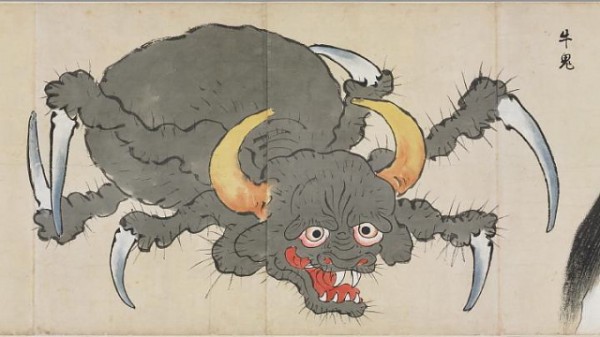
Ushi-oni (牛鬼) is a sea monster with the head of a cow and the body of a giant spider or crab.
Hey there, fans! This week’s post may have all of us collectively looking under the bed, in closets and in televisions, as the folks over at the Pink Tentacle have unearthed a huge scroll detailing several monsters from Japanese folklore!
These terrifying creatures range from the creepy Sara-hebi, a snake-like creature with the head of a woman, to the monstrous Ushi-oni, a sea monster with the head of a cow and the body of a crab. The people at the Pink Tentacle got the scoop on this scroll from the website of the International Research Center for Japanese Studies website, whose premises are located in Kyoto, Japan. Here’s a small collection of cut-outs from the entire scroll:
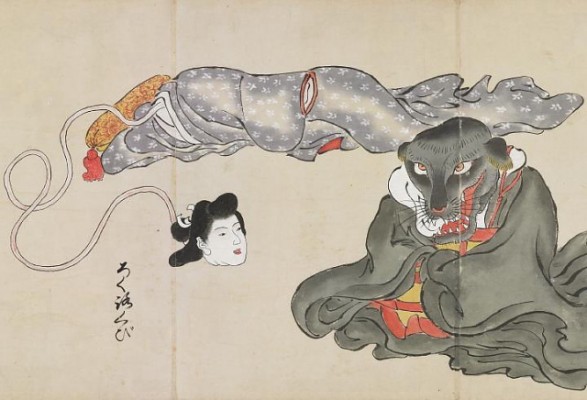
Rokurokubi (ろくろくび), a long-necked woman, is pictured next to an Inugami (犬神) dog spirit.
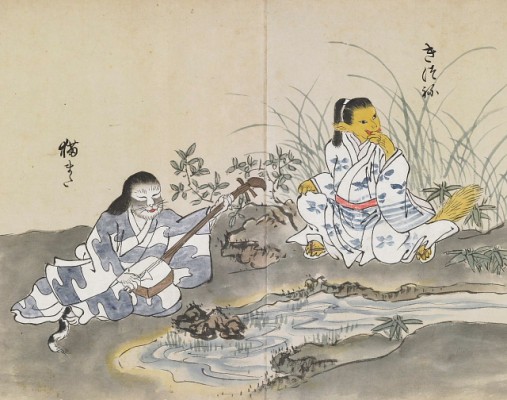
Nekomata (猫また) cat demon plays the shamisen next to a kitsune (狐) fox spirit.
Now you may be asking, other than to fan the creative flames of the people producing Syfy Original Movies, what this has to do with anything? Well, it’s common knowledge that many a horror and/or fantasy film/series/book/what-have-you have their roots in monster mythologies, either directly transplanting them onto the big screen, like what the recent movie Clash of the Titans did to the deities and monsters of Ancient Greece, or adapting them to fit modern-day society, like the faeries, centaurs and other creatures of European myth and legend in Eoin Colfer’s Artemis Fowl series (all of whom seem armed to the teeth with both magic and guns). With Japanese folklore it’s no different, but it seems to be that the monsters and deities from these islands of the East have retained more of their inherent spookiness and mysticism in the media, more so than their European counterparts.
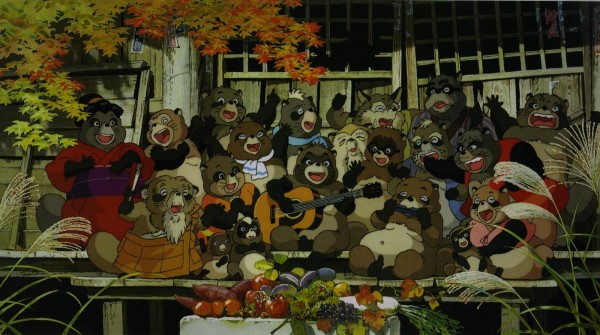
The colony of fun-loving, magical Tanuki, ready to have another party!
Studio Ghibli has done wonders to introduce the masses outside of Japan to these myths and monsters, especially so in the Oscar-winning anime Spirited Away and in the equally interesting (if not more entertaining) Pom Poko. Creatures from Japanese culture and mythology play a central part in both films, the former showing them as patrons of the huge bath-house where Chihiro serves as an attendant, while the latter has the main characters, a huge colony of magical tanuki, Japanese raccoon dogs, put on a parade to scare the people away from taking their natural habitats.
In both instances, I like to argue that a curious enough child would want to know more about these strange monsters they’ve never seen before, and, by extension, the land from which these fantastical creatures come from. There are hundreds of other examples of Japanese folklore appearing in the popular culture, but for now these two examples should suffice to prove this point.
Have a favorite monster that wasn’t in the list or in the clips? Tell us more about them in the comments!







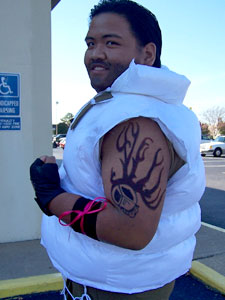 After finding out that the school's library was a welcome respite from the heat of the tropical island he inhabited, Paolo Jasa found out that books were a whole lot better than being a constant target during P.E. class; so much so that he developed a love for them that would last him a life time. His first forays in Science Fiction were in the novels of the esteemed I. Asimov, R. Bradbury, and D. Adams, while his adventures in Fantasy took him to the realms of Discworld, Hogwarts, and a Chicago that houses the only Wizard-For-Hire found in the local Yellow Pages, Harry Dresden.
After finding out that the school's library was a welcome respite from the heat of the tropical island he inhabited, Paolo Jasa found out that books were a whole lot better than being a constant target during P.E. class; so much so that he developed a love for them that would last him a life time. His first forays in Science Fiction were in the novels of the esteemed I. Asimov, R. Bradbury, and D. Adams, while his adventures in Fantasy took him to the realms of Discworld, Hogwarts, and a Chicago that houses the only Wizard-For-Hire found in the local Yellow Pages, Harry Dresden.